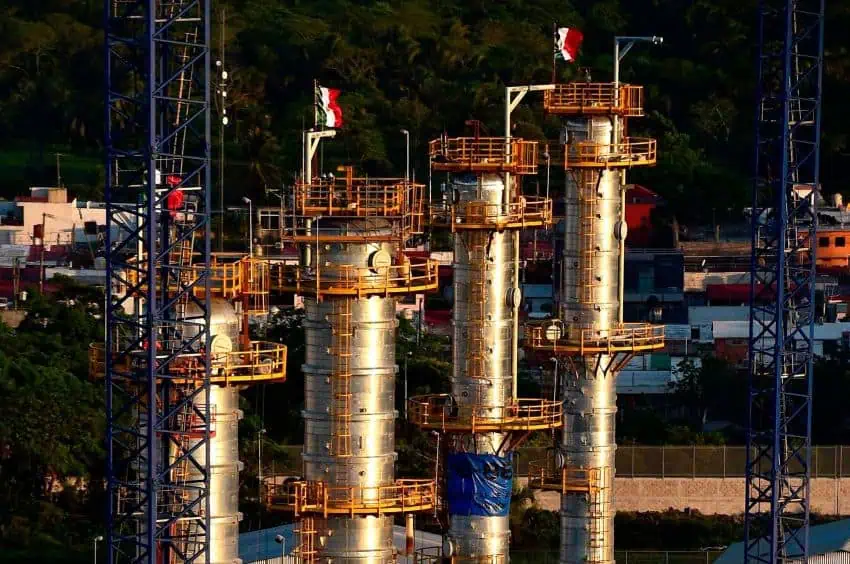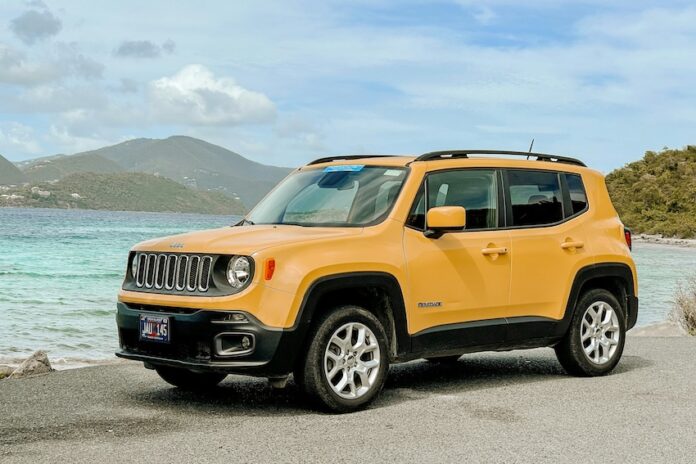When I was shopping around for a car a few years ago, I was surprised at the prices I was seeing. New cars in dealerships, I knew, were out of my range. But even used cars, some of them over 10 years old, seemed extremely pricey.
“320,000 pesos for a 2012 SUV? If someone has that kind of cash on them, why wouldn’t they just use it for a down payment on a new car?” I’d think.

Granted, this was the pandemic. Supply chains worldwide were seeing major disruption, and Mexico was no exception. Many places seemed simply “out of” cars. I’d walk into dealerships and be ignored, a shock coming from a place where salespeople fall over themselves to court you as a customer.
In the end, I finally found a good used car. It was three years old at the time, and still under warranty. I paid 240,000 pesos for it, a sum borrowed from a gracious uncle that I’m still paying back.
A recently arrived friend of mine asked about my car purchase, hoping to buy his own. “I don’t know what it’s going to be like now, though,” I told him. Prices, as we all know, have gone up.
Over the past three years, in fact, the average price of a new car in Mexico has gone from 348,000 to 516,000 pesos in 2024. Yikes.
Why, especially when Mexico manufactures so many cars? Wouldn’t saving them an overseas trip reduce the cost?
Well, like most things in life, the answer is more complex than we’d like it to be. Part of the reason, of course, are repercussions from the supply chain issues still being dealt with postpandemic. Even if they’re assembled here, not all the materials needed are sourced here. Cars are also coming equipped with increasingly complex and expensive computer systems. Taxes on vehicles in Mexico are high, and don’t end when you buy them. States differ, but in my own state of Veracruz, I must pay for a verificación, i.e., safety testing, twice a year.
Once you get the car, too, maintaining it is expensive. Gasoline in Mexico, for example, has more than tripled in price over the past 15 years. So far it shows no signs of abating. It currently takes me around 1,000 pesos to fill up my 40-liter tank. As I watched my sister fill up her own car of the same capacity and pay a little over US $20 for it on a recent trip, my jaw dropped. If Mexico is the source of all this petroleum, why on earth are we paying so much?

Well, for quite a while, all we had was the crude stuff, not the finished product. This meant that we’d send the crude mostly to the U.S., then they would sell it back to us as gasoline. Sheesh.
According to PEMEX, gasoline self-sufficiency for Mexico is possible within a few years. I both hope they are right and also will believe it when I see it. I’m not very business-minded, but my own logic tells me that a company that’s extremely in debt is not going to be lowering its consumer prices anytime soon.
Luckily, our environmental scientist president seems ready to help us transition to electric vehicles. Not that she necessarily needs help.
Since 2020, electric vehicles have already been pouring into Mexico from China. The percentage of hybrid or electric new car sales is already fast approaching 10%. Not wanting to miss the boat, Mexico is working on its own EVs (electric vehicles). The first made-in-Mexico electronic bus debuted not long ago, and there is a lot of excitement — and, yes, doubt — about a Mexican-made consumer EV, the Olinia, set to retail at much lower prices than other new cars. It’s similarly no-frills, but, hey, it will be safer than motorcycles!
There’s also, of course, the question of demand. Why should anyone lower their prices if people are still buying vehicles?
And boy, are they buying, even as car prices increase.
At least in my city they are: We are packed to the brim. My favorite joke lately is that half the people in the city should have to get rid of their cars to decongest the roads. Not the half I’m in, obviously.

A favorite pastime that is not a joke, however, is tracing mental fantasy routes around my city for a fantasy bus fleet that we don’t have. “About 50 buses that just go back and forth between these two points, another 50 between these two points — that outta do it!” My fantasies are vivid.
I mean, we have buses. We just don’t have enough, and with all the traffic, they can hardly move anyway. But I would be extremely happy to leave my car at home and hop on public transport so that I don’t have to drive myself. I bet I’m not the only one.
Luckily, what we do have are models for what’s possible, and we’ve got them right here in Mexico. My favorite public transportation system so far in Mexico — Mexico City’s MetroBus, with its own dedicated lanes — is already fully electric. This is a system that I dream of for my city. Some day!
While things in Mexico look uncertain lately, especially given all the tariff craziness, they also look, well, new. We are in a time of major transition.
Mexico, I believe, is on the right track. I just hope it remembers this famous adage as it considers how Mexicans are going to get around:
“A developed country is not one in which the poor have cars, but where the rich use public transportation.”
I’ll take one great EV-powered public transportation system per community to go, please!
Sarah DeVries is a writer and translator based in Xalapa, Veracruz. She can be reached through her website, sarahedevries.substack.com.

Mexico is not a major oil producer at all. Pemex’s production peaked in 2004 at 3.9 millions barrels per day and has steadily fallen for more than two decades to an all time low of ~1.6 million barrels per day. PEMEX is currently the most indebted oil company in the world, with its debt exceeding $110 billion USD as of 2024. This financial burden, combined with its operational inefficiencies and political constraints, has significantly hindered its ability to invest in new production and modernize its infrastructure.
Not to mention theft and some of it by Pemex executives.
Sad but true.
The cost of a new car in Mexico has less to do with already resolved supply chain issues of more complex technology than taxation and powerful dealer lobby. The draconian restrictions and cost importing used vehicles support Mexican dealers.
Not to mention the ridiculous high theft of petroleum due to corruption and/or cartel control, with absolutely no government intervention.
Unfortunately, Mexico’s energy policy has been disastrous under AMLO and not much better with Sheinbaum.
Political Control, mismanagement, and theft is widespread.
PEMEX’s operations are deeply influenced by political agendas.
Current policies under President AMLO prioritize energy sovereignty and domestic refining (e.g., the Dos Bocas refinery) rather than upstream exploration.
This political strategy aims to reduce fuel imports but further strains PEMEX’s financial capacity for exploration and production.
—
5. Aging Infrastructure and Technological Backwardness
Much of PEMEX’s drilling and refining infrastructure is outdated, leading to inefficiencies and higher maintenance costs.
It lags in adopting advanced exploration technologies like horizontal drilling and deepwater exploration, where major discoveries are more likely.
Just how much oil do you think there is to efficiently search for and tap?
The price of a new vehicle in Mexico has nothing to do with Pemex. Compared to the US, the price is high because of the IVA sales tax rate of 16%. That’s a steep tax embedded into the retail price.
Supply chain issues from Covid are more than 5 years behind. Those were solved long ago.
I think a discussion about the price of cars in Mexico isn’t very relevant if you don’t compare it to the rest of the world. In our household we have old cars that work just fine. And when they don’t I fix them or a mechanic fixes them. But our cost on autos is drastically less. More in line with Mexicans actually. Who as most know drive cars into the ground. As it should be. My truck is 21 years old and going strong. Salud!
The Mexican price of gasoline is about 40% higher than in the United States. Mexico decided some years back that they could not collect income taxes efficiently, so they put taxes on gasoline, tequila, and beer: the taxes were then efficiently collected by the manufacturers of these products.
We use less than half as much fuel as we did in the U.S. because our community is compact. In a pinch we can park the car and easily get everything we need on foot or with a golf cart.
Chose your location carefully. It is not that hard to do this in Mexico.
I read all those comments, but the answer is plain and simple, as a matter of fact, it’s a one word answer: Corruption, that’s the Mexican culture and it’s getting worse with those tyrants in the government, sorry my fellow Mexican friends, you vote them in , now you pay the consequences !!
If gouvernement bring price of gas down , you will pay less at the store who vegetable ,meat,milk etc who half of the price is transportation.